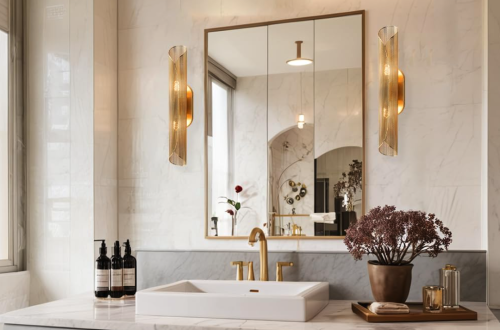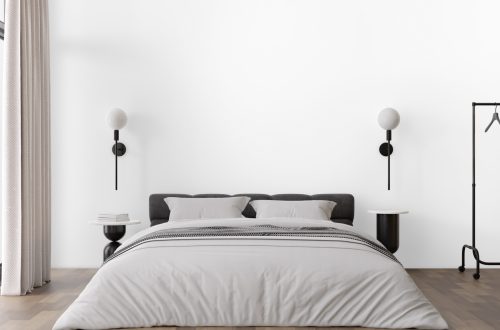Rustic Charm: Wooden Mortise and Tenon Wall Lamp
The wooden mortise and tenon wall lamp is a striking example of craftsmanship that marries functionality with aesthetic appeal. This lighting fixture, characterized by its elegant design and sturdy construction, serves as both a source of illumination and a decorative element in various interior settings. The mortise and tenon joint, a time-honored technique in woodworking, not only enhances the structural integrity of the lamp but also showcases the beauty of natural wood grain.
As homes increasingly embrace a blend of modern and traditional styles, the wooden mortise and tenon wall lamp stands out as a timeless choice that can elevate any room’s ambiance. In an era where mass-produced items dominate the market, the allure of handcrafted wooden lamps lies in their uniqueness. Each piece tells a story, reflecting the artisan’s skill and the wood’s character.
The warm glow emitted by these lamps creates an inviting atmosphere, making them ideal for living rooms, bedrooms, or even hallways. As we delve deeper into the history and versatility of this lighting fixture, it becomes evident that the wooden mortise and tenon wall lamp is more than just a source of light; it is a statement piece that embodies tradition, craftsmanship, and style.
The History of Mortise and Tenon Joinery
Mortise and tenon joinery is one of the oldest woodworking techniques known to humanity, with roots tracing back thousands of years. Archaeological evidence suggests that this method was employed in ancient Egyptian furniture and structures, showcasing its durability and effectiveness. The joint consists of two parts: the mortise, a cavity cut into one piece of wood, and the tenon, a protruding piece that fits snugly into the mortise.
This interlocking design provides exceptional strength, making it ideal for constructing furniture and fixtures that must withstand daily use. Throughout history, various cultures have utilized mortise and tenon joinery in their architectural marvels. In Japan, for instance, traditional wooden temples and shrines often feature this technique, allowing structures to endure earthquakes while maintaining their aesthetic integrity.
The joinery’s ability to create strong connections without the need for metal fasteners has made it a preferred choice among artisans who value craftsmanship and sustainability. As we explore the evolution of this technique, it becomes clear that mortise and tenon joinery is not merely a method of assembly; it is a testament to the ingenuity of human creativity across generations.
The Versatility of Wooden Wall Lamps
Wooden wall lamps are incredibly versatile lighting solutions that can complement a wide range of interior design styles. From rustic cabins to modern minimalist spaces, these fixtures can adapt seamlessly to various aesthetics. Their natural materials bring warmth and texture to any room, making them suitable for both casual and formal settings.
For instance, a reclaimed wood wall lamp can enhance the charm of a farmhouse-style kitchen, while a sleek, contemporary design can add sophistication to an urban loft. Moreover, wooden wall lamps can be customized in terms of size, shape, and finish to suit individual preferences. Artisans often experiment with different types of wood—such as oak, walnut, or maple—each offering distinct colors and grain patterns.
This customization allows homeowners to select a lamp that not only fits their lighting needs but also resonates with their personal style. Additionally, many wooden wall lamps come with adjustable features, such as swiveling arms or dimmable bulbs, providing further flexibility in how they are used within a space.
How to Incorporate Rustic Charm into Your Home Decor
Incorporating rustic charm into home decor can be achieved through thoughtful design choices that emphasize natural materials and earthy tones. Wooden mortise and tenon wall lamps serve as an excellent starting point for achieving this aesthetic. Their organic shapes and textures can create focal points in rooms while harmonizing with other rustic elements like stone walls or exposed beams.
To enhance this charm further, consider pairing these lamps with vintage furniture pieces or handmade textiles that echo the warmth of wood. Another effective way to infuse rustic charm is by using complementary decor items that celebrate nature. For example, incorporating potted plants or botanical prints can soften the look of a room while reinforcing the connection to the outdoors.
Additionally, using warm color palettes—such as deep greens, browns, and soft creams—can create a cohesive environment that feels inviting and grounded. By thoughtfully selecting decor elements that resonate with the rustic theme, homeowners can create spaces that are not only visually appealing but also evoke a sense of comfort and nostalgia.
The Benefits of Using Wood in Home Lighting
Wood offers numerous benefits when used in home lighting fixtures like wall lamps. One of the most significant advantages is its sustainability; wood is a renewable resource when sourced responsibly from managed forests. This eco-friendly aspect appeals to environmentally conscious consumers who seek to minimize their carbon footprint while enhancing their living spaces.
Furthermore, wooden fixtures often have a lower environmental impact compared to metal or plastic alternatives, which may require more energy-intensive manufacturing processes. In addition to its sustainability, wood possesses natural insulating properties that can contribute to energy efficiency in home lighting. Unlike metal fixtures that can become hot to the touch when illuminated for extended periods, wooden lamps tend to remain cooler, reducing energy consumption associated with cooling systems in warmer climates.
The aesthetic appeal of wood also cannot be overstated; its unique grain patterns and textures add depth and character to any room. This natural beauty enhances the overall ambiance of a space, creating an inviting atmosphere that artificial materials often fail to replicate.
Choosing the Right Placement for Your Wall Lamp
Selecting the ideal placement for a wooden mortise and tenon wall lamp is crucial for maximizing its functionality and aesthetic impact. Consideration should be given to both the height at which the lamp is mounted and its proximity to other elements within the room. For instance, placing a wall lamp above a reading nook or beside a bed can provide focused illumination for activities such as reading or working while adding visual interest to the space.
In addition to height considerations, it is essential to think about how the lamp interacts with other light sources in the room. Layering different types of lighting—ambient, task, and accent—can create a well-balanced atmosphere. A wooden wall lamp can serve as an accent light that highlights artwork or architectural features while complementing overhead lighting fixtures.
By strategically positioning wall lamps in relation to other light sources and furniture arrangements, homeowners can achieve both functional lighting solutions and cohesive design aesthetics.
Maintenance and Care for Wooden Wall Lamps
Caring for wooden wall lamps is essential to ensure their longevity and maintain their beauty over time. Regular maintenance involves dusting the lamp with a soft cloth to prevent dirt buildup that can dull its finish. For deeper cleaning, it is advisable to use a damp cloth followed by immediate drying to avoid moisture damage.
Depending on the type of finish applied to the wood—whether it be oil-based or lacquered—occasional reapplication may be necessary to preserve its luster. In addition to cleaning, protecting wooden wall lamps from direct sunlight is crucial as prolonged exposure can lead to fading or warping over time. If possible, position lamps away from windows or use window treatments that filter sunlight effectively.
Furthermore, ensuring that electrical components are regularly inspected by a qualified electrician can prevent potential hazards associated with wiring issues. By following these maintenance tips, homeowners can enjoy their wooden wall lamps for years while preserving their original charm.
Where to Find Quality Wooden Mortise and Tenon Wall Lamps
Finding quality wooden mortise and tenon wall lamps requires careful consideration of both craftsmanship and sourcing practices. Many artisans specialize in handcrafted lighting fixtures that utilize traditional joinery techniques, ensuring each piece is unique and built to last. Local craft fairs or artisan markets often showcase talented woodworkers who create one-of-a-kind designs that reflect regional styles and materials.
For those seeking convenience without sacrificing quality, numerous online platforms cater specifically to handmade goods. Websites like Etsy feature shops dedicated to artisanal lighting solutions where customers can browse through various styles and finishes while supporting small businesses. Additionally, reputable home decor retailers may offer curated selections of wooden wall lamps crafted by skilled artisans.
By exploring these avenues, homeowners can discover beautiful wooden mortise and tenon wall lamps that align with their design vision while celebrating traditional craftsmanship.



